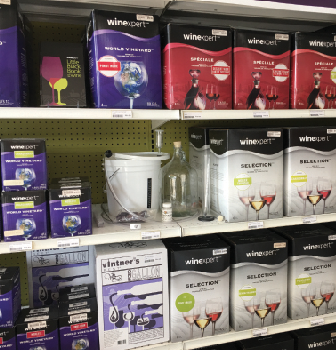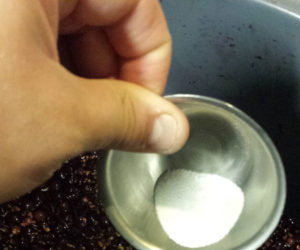 There are many different factors that go into selecting the right wine kit for your first time making wine at home. Selecting one kit that is the best fit for you from hundreds that are available can be difficult, but taking some time before making that first purchase to think about what you want out of your wine will help make that decision easier. If you don’t have a particular grape variety in mind, what style and characteristics are you looking for from that first batch?
There are many different factors that go into selecting the right wine kit for your first time making wine at home. Selecting one kit that is the best fit for you from hundreds that are available can be difficult, but taking some time before making that first purchase to think about what you want out of your wine will help make that decision easier. If you don’t have a particular grape variety in mind, what style and characteristics are you looking for from that first batch?
What do you like to drink? But keep in mind that a key to success for beginners is to not go overboard with your first kit. Remember to keep it simple at the start.
Before you jump into picking the wine style you want to make, it is important to understand the different types of kits on the market. You have the option to purchase fully concentrated grape juice or partially concentrated grape juice, both of which will require adding water to make a standard 5- or 6-gallon (19- or 23-L) batch of wine. There are also a small number of kits on the market that are 100% juice, which do not require a water addition. Without getting too technical regarding the process, juice is the liquid pressed from the grapes, while concentrate is essentially grape juice with some amount of water removed. Each of these kit formats should come with all of the ingredients needed to make wine including not only the juice or concentrate, but any required additions such as nutrients, acids, tannins, and yeast. However, the equipment to make the wine as well as the bottles and corks will be your responsibility to purchase separately.
When deciding on the right kit, the most obvious advice is to begin with determining what style of wine you are going to want to drink multiple bottles of (not in the same sitting, probably!). There are kits for any major wine style from reds, whites, rosés, dessert styles, wine coolers, Port-styles, fruit wines, and so on. But there are still going to be many options and it makes sense to spend some time researching the different kits that fit your desires. “Do some research ahead of time. Not all Merlots are the same much like not all apples are red or sweet. If you know what you like, read up on the description of the wine kit as it will give you a reasonable idea on how it will taste,” advises BSG HandCraft Marketing Manager, Juno Choi.
Also take into consideration how much time is required for the wine to be made (and then aged). Most kits require 4, 6, or 8 weeks to make, and then aging times depend on the style and patience of the winemaker. Keep in mind that some kits benefit greatly from an extended aging, anywhere from 6 months for whites to 12–18 or even more months for reds. Consider whether you need to have the wine ready by a certain date, as well as how long you are going to want to allow your first batch to age before beginning to consume it. Kit descriptions should include a recommended timeline, but “a general rule is that larger format wine kits (think bigger box) work better for aging. Conversely, smaller format wine kits can be consumed sooner,” says Choi. This is true, he says, because the smaller the box generally indicates the higher percentage of concentrate vs. juice, and concentrate kits do not require as much aging.
Of course, price point will play a part in any consumer decision. Buying a less expensive wine kit because you are new to the winemaking game may be a good idea so you can ease your way into your new hobby without investing too much. But keep in mind that there is a reason certain kits within the same brand are more expensive. If you purchase a more expensive kit you should expect the potential for a better resulting wine. By taking a look at the cost per bottle rather than the cost of the kit — even when shopping at the higher price points — you will see that the price per bottle is still lower than buying a comparable wine from the supermarket.
After making that first kit purchase be sure that you understand the directions before you start and that you have all of the necessary equipment needed. A standard start-up kit should only need a plastic fermenter with a cover, hydrometer, glass carboy, airlock and bung, measuring cups, long food-grade plastic spoon, and siphon hoses.
If you know someone who has made their own wine, make your first winemaking experience a group activity so they can keep you on the right track and answer any questions that may come up. And most of all, have fun. After all, you are making wine.





